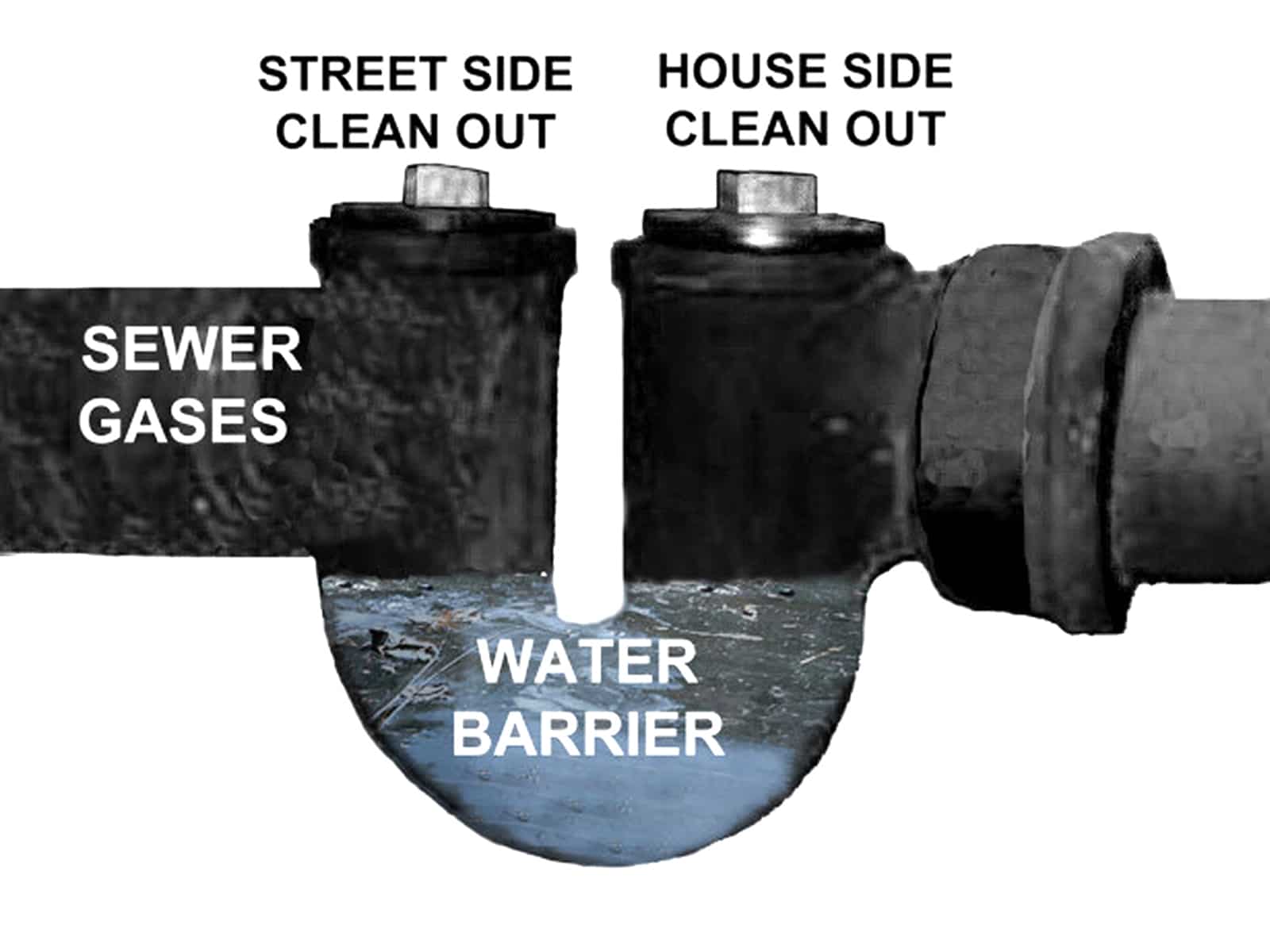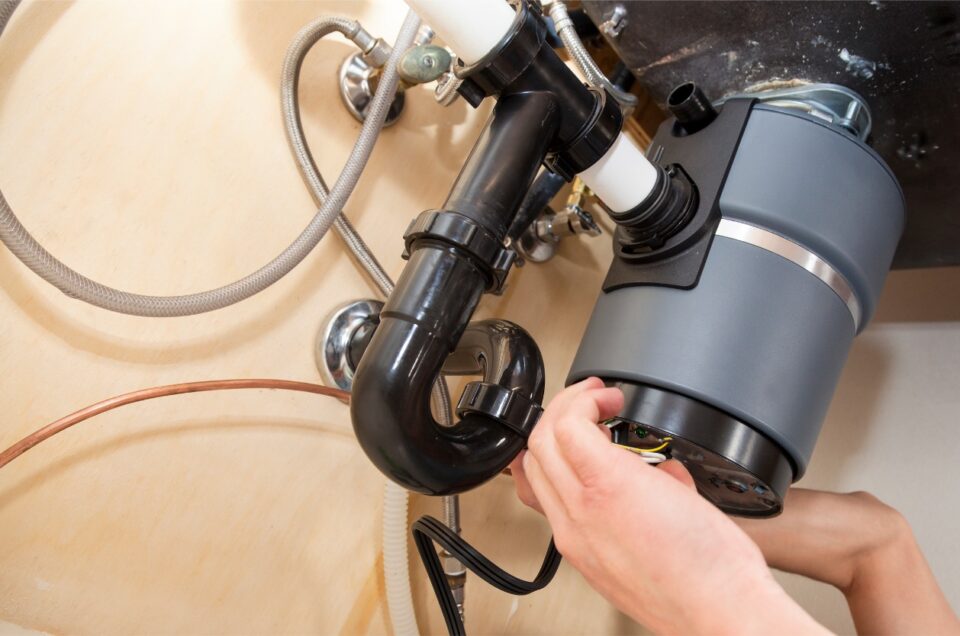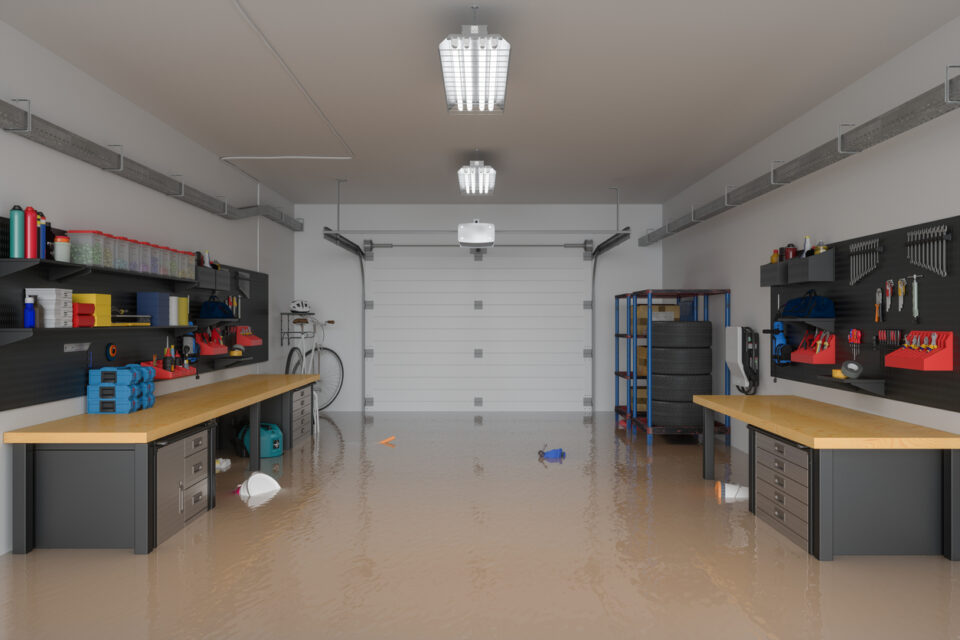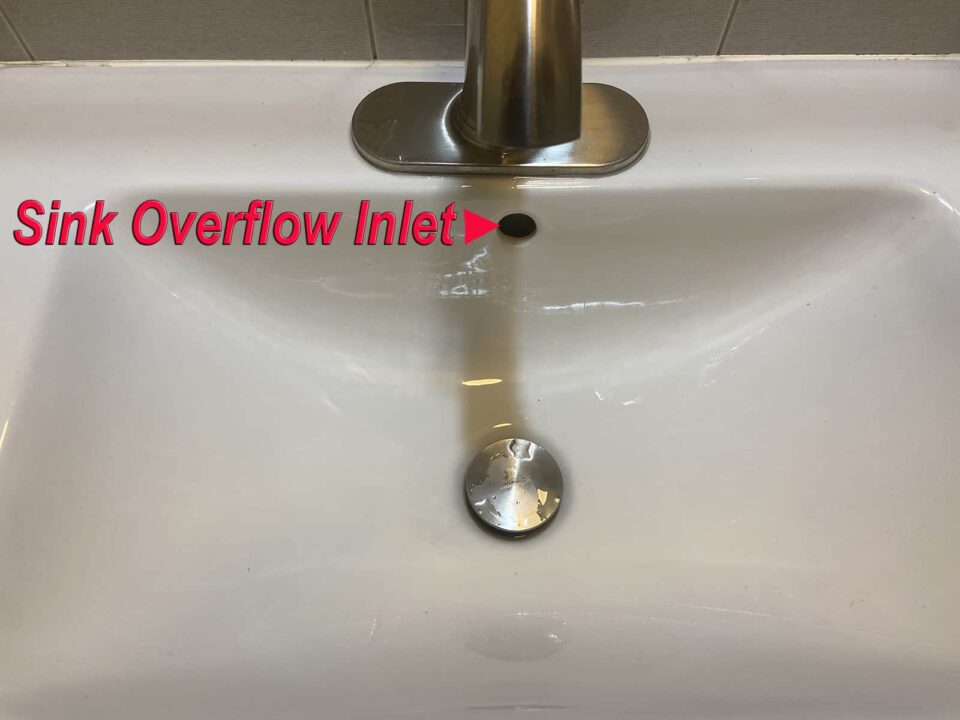If you’re a typical home or property owner, questions about drain components and the drain hardware inside your home come up routinely. This article will attempt to give a brief description, explanation, and who to call when a problem arises with any of your drain components. In some cases, you may even be able to provide a remedy yourself.
Why are drain components and drain hardware important?
While it is not vital or required information for a homeowner to know all about the various drain comments and hardware that comprise their drain system, a basic understanding can surely come in handy. With that having been said, what follows is a basic and rudimentary explanation of the various components that make up a drain system in a home, and in larger and commercial buildings as well.
The 14 Basic Components Of Your House Drain Hardware
Of course, you know that your drain system is made up of vertical and horizontal pipes of various sizes and materials. However, more frequently than not problems arise with the 14 items listed below. This will help you know what they are known as, their location, and their purpose.
1. House sewer trap
The house sewer trap is the main clean-out for both inside and outside your home. It is usually located at the very front of your home or basement. In NYC it is U-shaped and has 2 clean out plugs. If the caps are not on properly odors can escape into your house, or wastewater can escape as well.
If objects enter your drain pipes, they will usually get caught inside the belly of the trap, hence the name trap. To learn how to locate your sewer trap read about how to find your sewer trap. If you need the actual house trap replaced Balkan Sewer And Water Main Service is fully licensed, and expert at this sort of work.
2. Grease trap
A grease trap is typically installed in commercial establishments, such as restaurants, and not in residential homes. As its name implies it traps grease inside a holding tank. A grease trap does not allow the grease to flow down your house sewer, or into the public sewer. When it needs to be cleaned a specialized service needs to be called, at this time Balkan Drain Cleaning does not service grease traps. If you need a grease trap installed, none but a Licensed Master Plumber should perform this work.
If you want to avoid grease-clogged drains in your home, there are many easy-to-follow and commonsense approaches.
3. Sewer access pit
A sewer access pit may also contain your water service line or even your gas line in some unique cases. It is also more commonly known as a sewer pit. It is often an overlooked component of your drain hardware. However, it provides a vital function of easy access, a safe walking surface, and a virtually air-tight structure.
There are now better options when it involves sewer access pits
The above may not seem important, until someone trips and falls in your pit, or noxious odors escape from out of it. Balkan is at the forefront of installing water-tight, anti-slip, and long-lasting composite access pits. If your sewer access pit is in disrepair, count on Balkan for an expert access pit installation. To learn more, read about a sewer access pit that is safe, secure, and watertight.
4. P Trap drain hardware
As its name suggests, a P trap is in the shape of the letter P. When it is installed it looks like a sideways P. A P trap is used to trap plumbing fixtures such as sinks, washing machine drains, area drains, and even toilets. It is also one of the required shower drain components.
Like any drain trap, its primary functions are to form a water barrier to block the escape of sewer gases and to catch foreign objects before they block your drain pipes. If you have a rotten or leaking P trap, read about how to replace a P Trap.
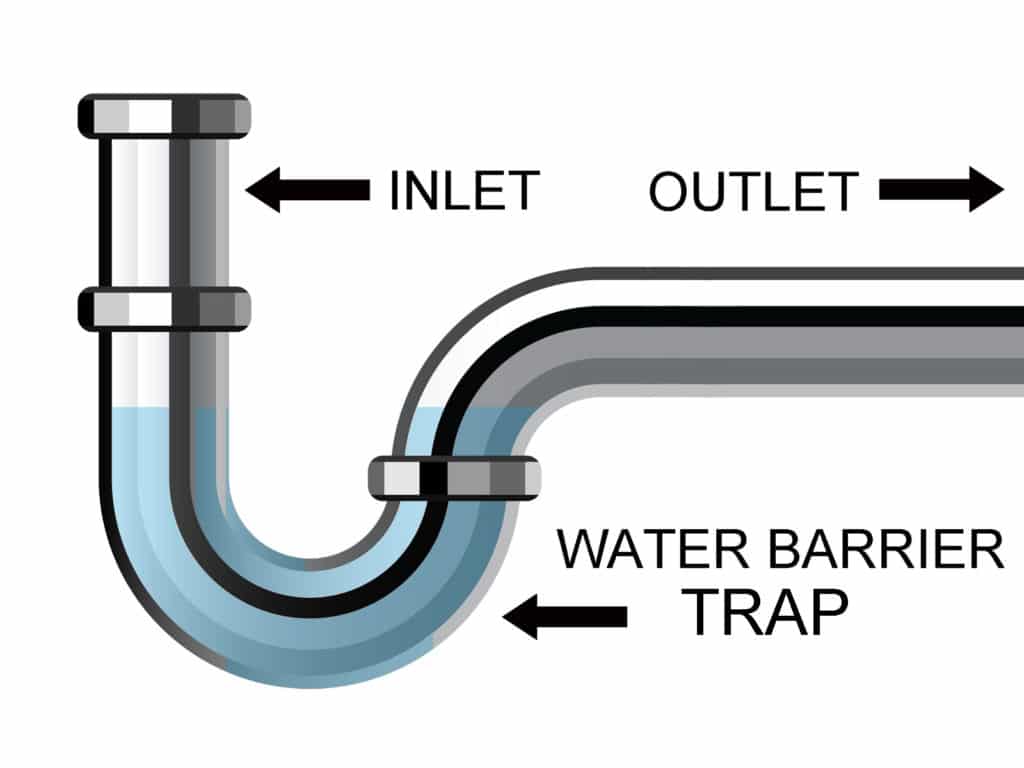
5. Area drain hardware
An area drain, as its name seems to apply, collects water from a specific area. Typically an area drain is installed for a driveway, back yard, or in a basement. An area drain can also be known as a yard drain, driveway drain, trench drain, or floor drain. They all serve basically the same purpose in terms of drain hardware. If you think your area drain is not that important, learn how a blocked outside drain can cause flooding and damage.
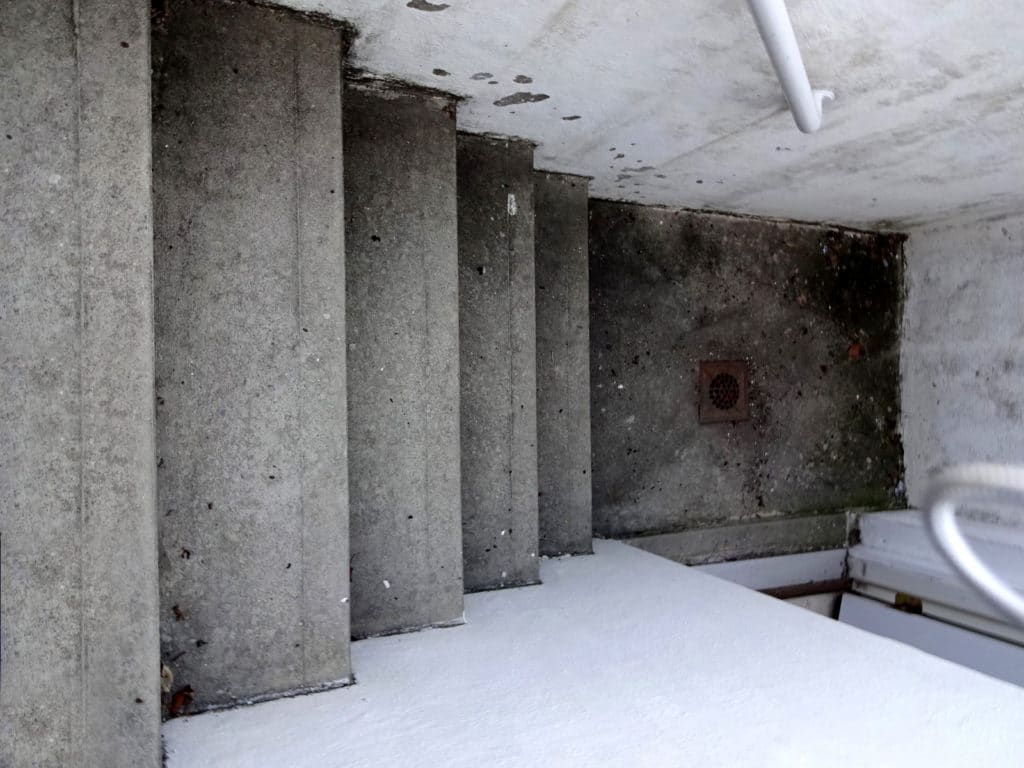
6. Dry wells
Dry wells are underground holding tanks used to collect rainwater, also known as stormwater. Water is sent directly to the dry well via roof leaders or a house stormwater piping system. The dry well tanks themselves are constructed with weep holes and typically surrounded with crushed stone and filter fabric. This careful construction allows for water to seep into the surrounding soil and takes a burden off of the public sewer system.
Dry wells should be carefully designed by an architect or an engineer to ensure functionality
Dry wells have to be carefully designed by an architect or engineer. Typically they are installed at the time of the home construction using heavy equipment, with the piping installed by a Licensed Master Plumber. If a dry well ever needs to be cleaned, sometimes the cover can be removed and cleaned by hand. But more frequently a specialized vacuum truck is needed to safely and quickly remove any sediment and debris.
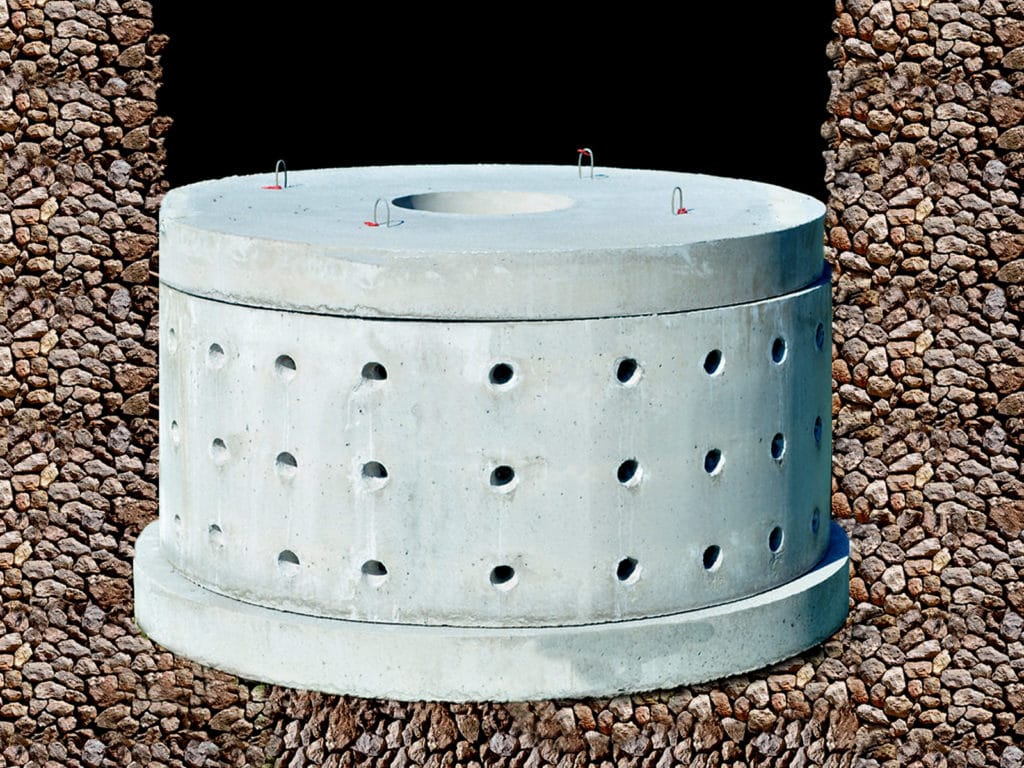
7. Detention tank drain hardware
Detention tanks have some similarities to dry wells but serve a different purpose. This type of drain hardware is specifically designed to “detain” rain and wastewater, not “retain it”. The big difference is that a detention tank does release all water accumulated in the tank to the public sewer systems.
The purpose of a detention tank is when heavy rain occurs, or a flash flood, it detains the water long enough to prevent the public sewer system from becoming overburdened, or surcharged.
Similar to the dry wells, detention tanks are installed at the time a building is newly constructed. Due to their weight, very heavy excavation equipment is needed to put them in place. Licensed master Plumbers are required to install the actual piping leading to and from the tanks.
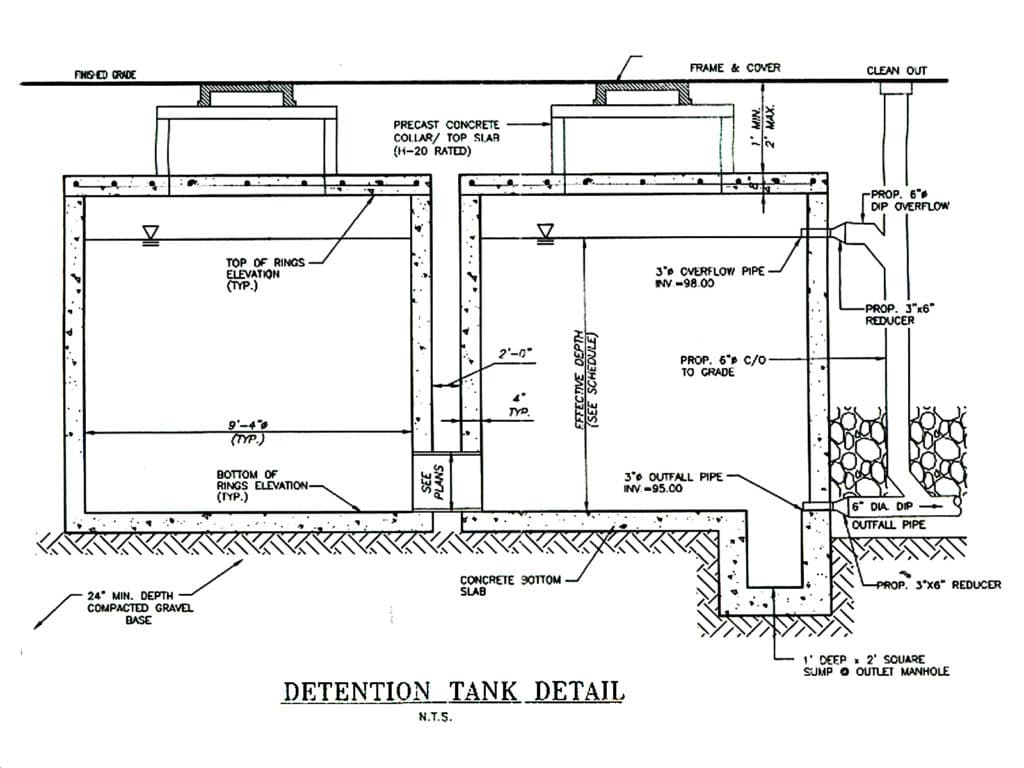
8. Leaders and Gutters
Leader and gutters are considered rain hardware, even though traditional plumbers or drain cleaners have little to do with them. Unless you own a commercial property, leader and gutter work is not handled by a plumber or drain cleaner. If cleaning is needed, there are specialized services that perform that. It is always a good idea to clean your gutters and leaders after the Fall season, and before Winter arrives. After a big snow melt, clogged leaders and gutters can create havoc when a rush of melted snow comes down off your roof.
9. Main sewer line
Your main sewer line is considered the drain piping after your main house trap, and the piping after the foundation wall. Repairing, replacing a house sewer, and installing new main house sewer lines is Balkan’s specialty. it is also among the most expensive plumbing jobs that a homeowner can encounter. To learn more about sewer work in NYC read A House Sewer Repair Tutorial.
10. Septic System
Septic systems are very rarely found inside the limits of NYC. However, in Nassau County, just under 10% of properties still utilize septic systems. A septic system is specialized drain hardware that acts as a private sewer treatment system. A septic system is typically composed of a tank that retains the sludge and solids, and an overflow tank. Many systems have a leaching field.
When a septic system needs cleaning only a specially licensed contractor can perform this work. It also requires specialized equipment such as a pump truck with a waste conveyance permit. Read this post to learn more about septic systems.
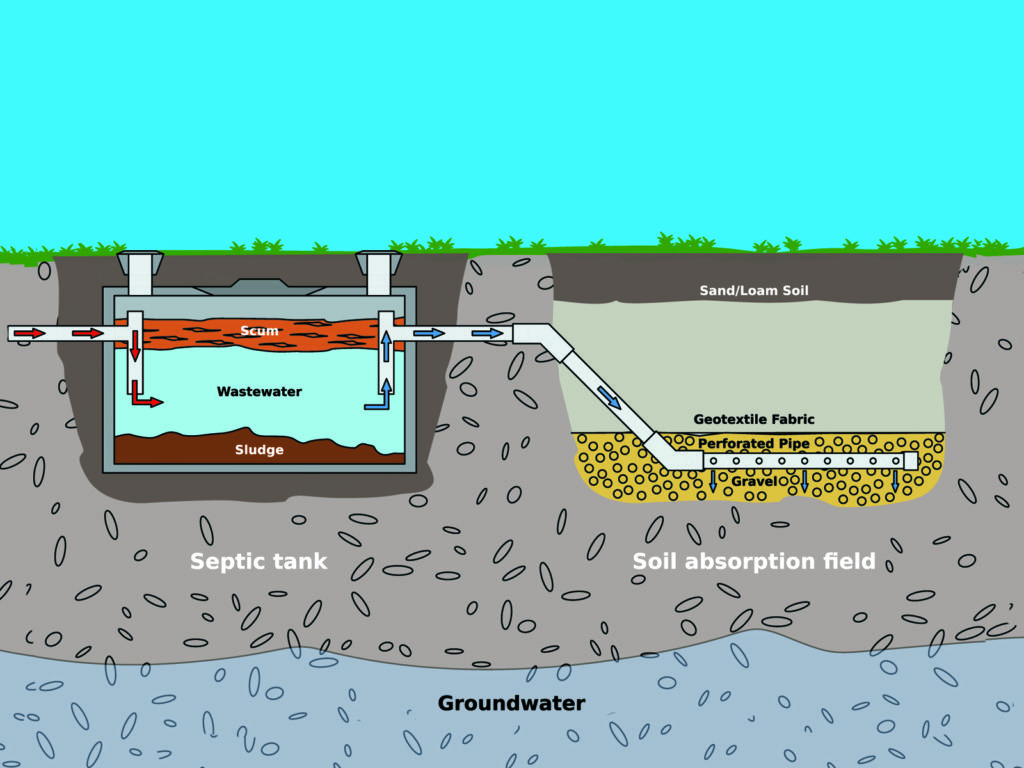
11. House drain hardware
Your house drain is the horizontal piping that typically runs under your basement floor from the rear of your basement, up to your main house trap. In some cases, it is above the finished grade of your basement floor and hung along a side wall. The house drain may contain various clean-out points and is considered the “trunk” of your drain system.
12. Stack line
A drain stack is a vertical drain line. A stack runs up from the house drain to the upper floors of your home. Typically at each floor, including where it ties into the house drain, there is a clean out. When a clog exists in a drain stack it is more difficult to locate and clear. That is because it may be located behind a finished wall.
13. Branch line
If a house drain is considered the trunk of your drain system, the branch lines are considered the individual lines that radiate out to all of your plumbing fixtures. Branch lines for a home can be any size from 2″ up to 4″ for a typical private home.
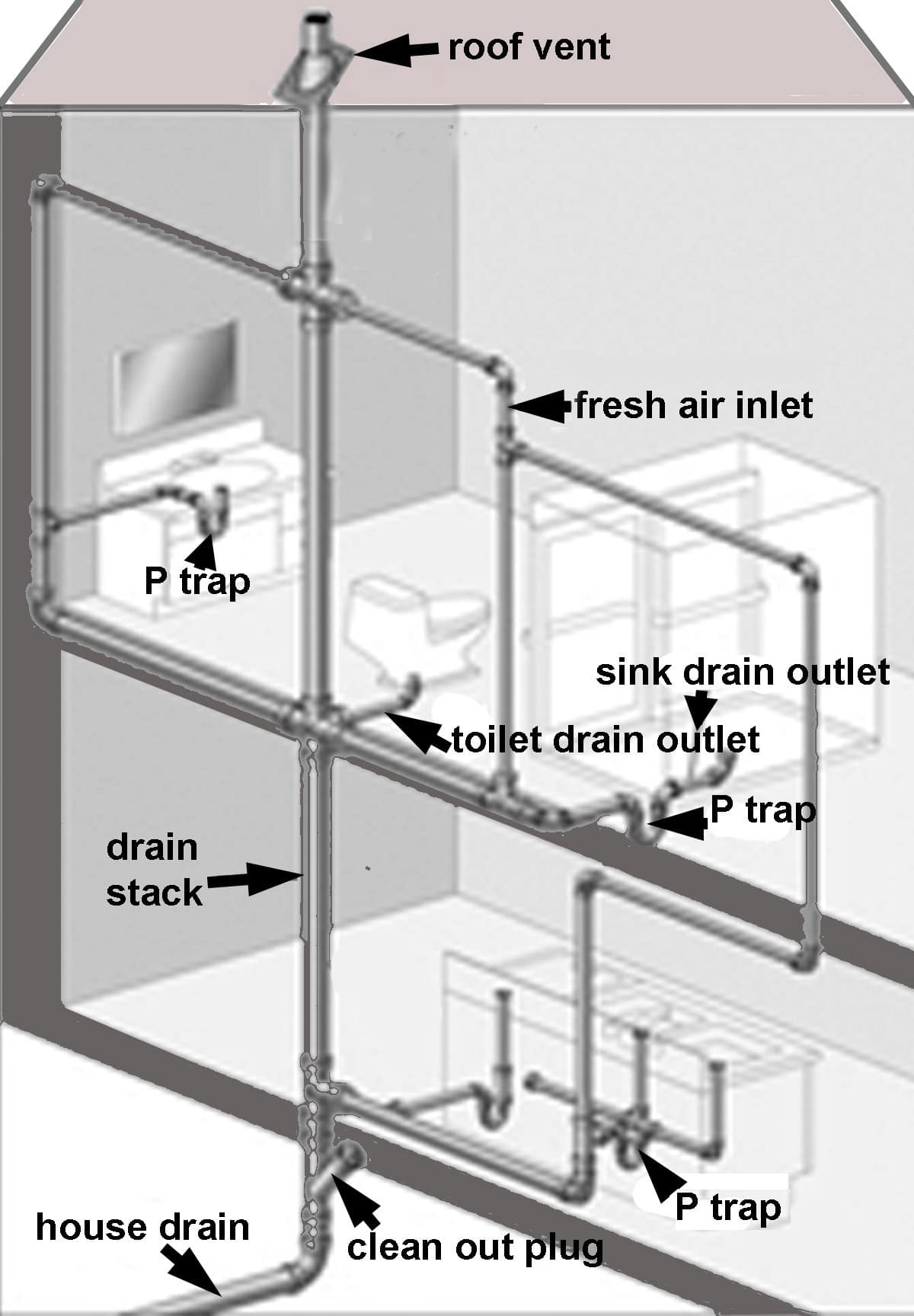
14. Plumbing vent lines
The last piece of “drain hardware” we’ll speak about is your drain system vent lines. Venting is often overlooked but is a vital part of a properly functioning drain system. Your drain vent lines allow air to enter your drain system to displace the water as it flows through.
A simple children’s trick explains plumbing vents
Vent lines are similar to when you drink out of a bottle or can of soda. If you don’t allow air to displace the soda escaping from the can or a bottle it doesn’t flow properly. The liquid can flow unevenly, or even stop monetarily. When that happens with a drain line it is much more inconvenient. That is why every plumbing fixture in your home must have a vent. To learn more, read why clearing debris from your vent lines is important.
Balkan is Your NYC Sewer, Drain, and Water Main Expert
For well over 65 years Team Balkan has provided New Yorkers with both expert advice and service. For any water service line, drain, or home sewer issue, consider Balkan your “one-stop” solution. Our staff and field forces are available 7 days a week, and after hours as well. Please feel free to contact the Balkan Team when you need any sort of assistance.

